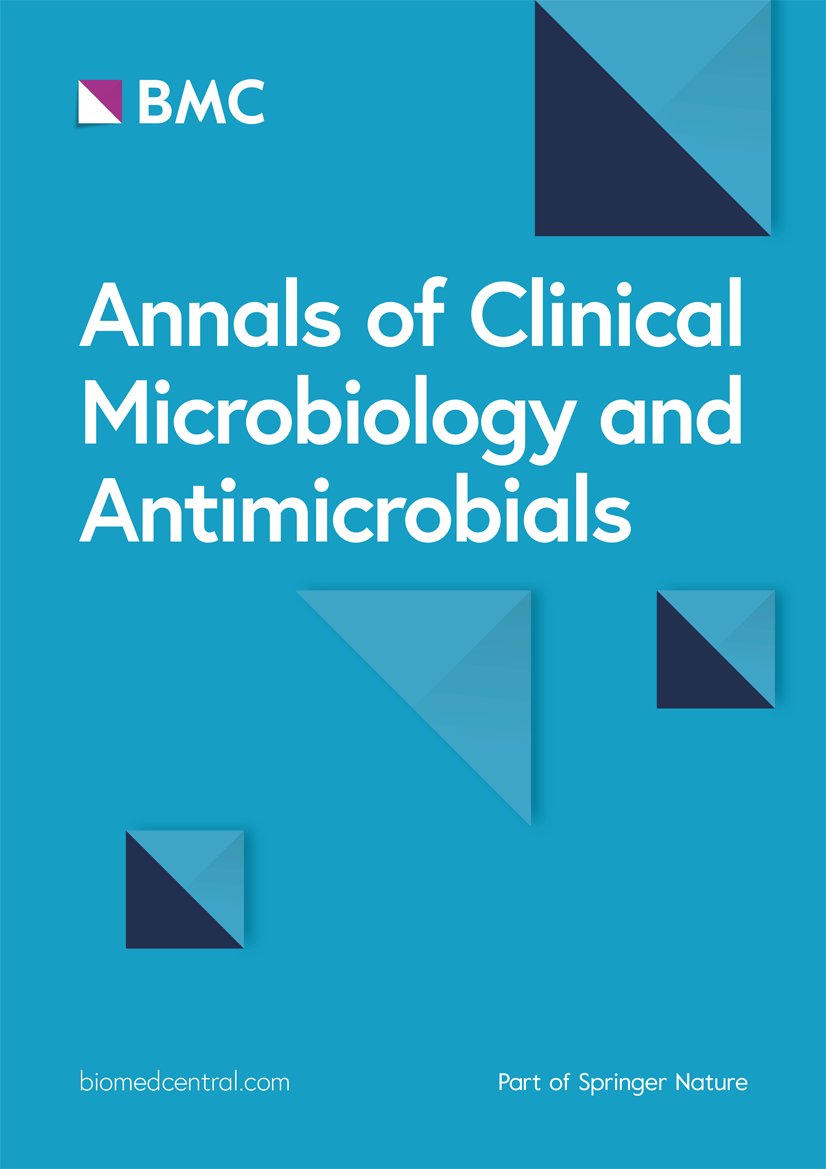呼吸道感染中革兰阴性菌的元基因组下一代测序诊断策略
IF 4.6
2区 医学
Q1 MICROBIOLOGY
Annals of Clinical Microbiology and Antimicrobials
Pub Date : 2024-02-01
DOI:10.1186/s12941-024-00670-x
引用次数: 0
摘要
本研究旨在通过对支气管肺泡灌洗液(BALF)样本进行元基因组新一代测序(mNGS),确定区分疑似肺炎病例中致病性和非致病性革兰氏阴性菌(GNB)的最有效诊断方法。对从 583 名患者采集的 BALF 样本进行了 mNGS 效果评估,并将结果与微生物培养和最终临床诊断结果进行了比较。对三种解释方法的诊断准确性进行了评估。在各种判读方法中,临床判读(Clinical Interpretation,CI)的诊断效果最好,灵敏度为 87.3%,特异性为 100%,阳性预测值为 100%,阴性预测值为 98.3%。CI 的特异性明显高于简单解释法(SI)的 37.9%。此外,CI 还排除了 SI 确定为假定病原体的一些微生物,包括副流感嗜血杆菌、副溶血性嗜血杆菌和产气克雷伯菌。正确解读 mNGS 数据对于准确诊断由 GNB 引起的呼吸道感染至关重要。为此建议使用 CI。本文章由计算机程序翻译,如有差异,请以英文原文为准。
Diagnostic strategy of metagenomic next-generation sequencing for gram negative bacteria in respiratory infections
This study aims to identify the most effective diagnostic method for distinguishing pathogenic and non-pathogenic Gram-negative bacteria (GNB) in suspected pneumonia cases using metagenomic next-generation sequencing (mNGS) on bronchoalveolar lavage fluid (BALF) samples. The effectiveness of mNGS was assessed on BALF samples collected from 583 patients, and the results were compared with those from microbiological culture and final clinical diagnosis. Three interpretational approaches were evaluated for diagnostic accuracy. mNGS outperformed culture significantly. Among the interpretational approaches, Clinical Interpretation (CI) demonstrated the best diagnostic performance with a sensitivity of 87.3%, specificity of 100%, positive predictive value of 100%, and negative predictive value of 98.3%. CI’s specificity was significantly higher than Simple Interpretation (SI) at 37.9%. Additionally, CI excluded some microorganisms identified as putative pathogens by SI, including Haemophilus parainfluenzae, Haemophilus parahaemolyticus, and Klebsiella aerogenes. Proper interpretation of mNGS data is crucial for accurately diagnosing respiratory infections caused by GNB. CI is recommended for this purpose.
求助全文
通过发布文献求助,成功后即可免费获取论文全文。
去求助
来源期刊

Annals of Clinical Microbiology and Antimicrobials
MICROBIOLOGY-
CiteScore
8.60
自引率
0.00%
发文量
49
审稿时长
>12 weeks
期刊介绍:
Annals of Clinical Microbiology and Antimicrobials considers good quality, novel and international research of more than regional relevance. Research must include epidemiological and/or clinical information about isolates, and the journal covers the clinical microbiology of bacteria, viruses and fungi, as well as antimicrobial treatment of infectious diseases.
Annals of Clinical Microbiology and Antimicrobials is an open access, peer-reviewed journal focusing on information concerning clinical microbiology, infectious diseases and antimicrobials. The management of infectious disease is dependent on correct diagnosis and appropriate antimicrobial treatment, and with this in mind, the journal aims to improve the communication between laboratory and clinical science in the field of clinical microbiology and antimicrobial treatment. Furthermore, the journal has no restrictions on space or access; this ensures that the journal can reach the widest possible audience.
 求助内容:
求助内容: 应助结果提醒方式:
应助结果提醒方式:


